Listen and Type - Guide to Duolingo English Test Question (2025)
In this post, you’re going to learn everything you need to know about the Listen and Type question on the Duolingo English Test, including the tips and tricks that will get you the highest score.

Table of Contents
- What is the “Listen and Type” question?
- Tips to do well on “Listen and Type” questions
- How to practice “Listen and Type” questions

What is the “Listen and Type” question?
The Listen and Type question looks like this:
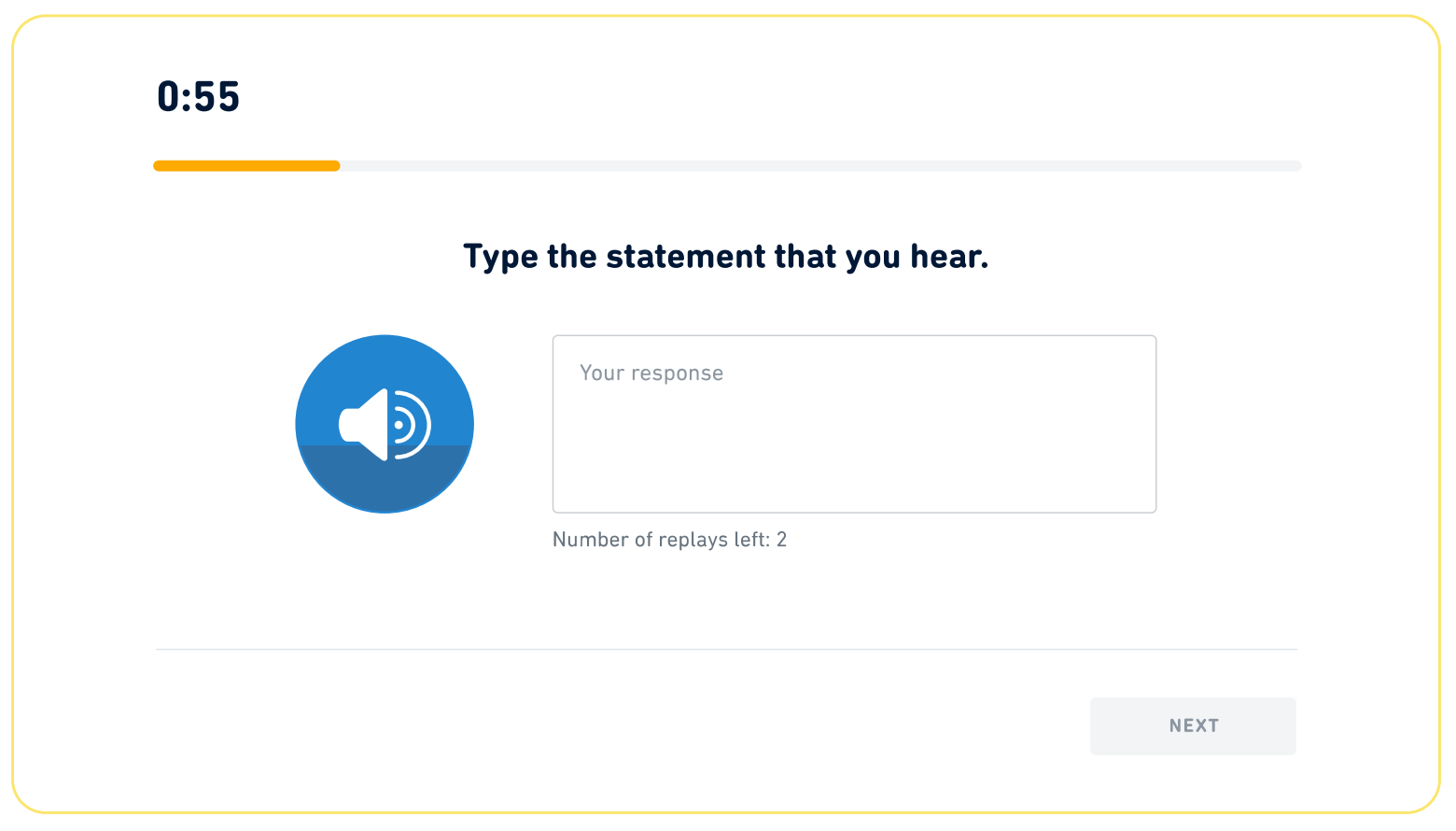
You will have 60 seconds to listen to the statement and type what you hear. The statement is usually just 1 sentence. The Listen and Type question tests how well you understand spoken English.
The challenging part with this question is that you can only listen to the statement 3 times. Later in the post, we will see how you can maximize each listen and get the right answer.
This question appears 6 to 9 times on the test, making it one of the most common questions. It counts toward your Listening, Comprehension, and Conversation subscores.
Tips to do well on “Listen and Type” questions
- Make sure your volume is turned up
- Pause between listens
- Use each listen strategically
- Listen for contractions
- Listen for questions
- Proofread your response
Let's talk about each tip in more detail:
Make sure your volume is turned up
When you come to a Listen and Type question, the audio will play automatically. If the volume on your computer or laptop is off or low, you won’t hear it!
Pause between listens
After each listen, take a moment to think about what you just heard. What do you think they said? What did you not understand? Were there any words you didn’t recognize? Pay attention to these things the next time you listen to the statement.
Use each listen strategically
Here are the steps you should follow to answer this question:
- Listen to the statement for the first time. ☝️Remember! The audio will play automatically when you come to the question.
- Write down as much as you can. Identify the areas you didn’t understand.
- Listen to the statement again, paying particular attention to the areas you didn’t understand in the first listen.
- Fill in the missing parts.
- Listen to the statement for the final time. Use this listen to proofread your response.
Listen for contractions
Duolingo often likes to include contractions. For example, they will use "I'd" instead of "I would." To get full marks, you have to type contractions when you hear them.
👉 For more examples of common contractions, check out our express lesson about this tip:
Listen for questions
Duolingo also likes to put questions. If you hear a question, be sure to put a question mark (?) at the end. Also, remember that typically questions invert the subject and verb. So, You are hungry. becomes Are you hungry?
Proofread your response
Anytime you have to type on the DET, you should take some time to proofread your response. You don't want to lose points because of typos!
How to practice "Listen and Type" questions
With Arno, you have free access to unlimited Listen and Type practice questions that are just like the questions on the actual test.
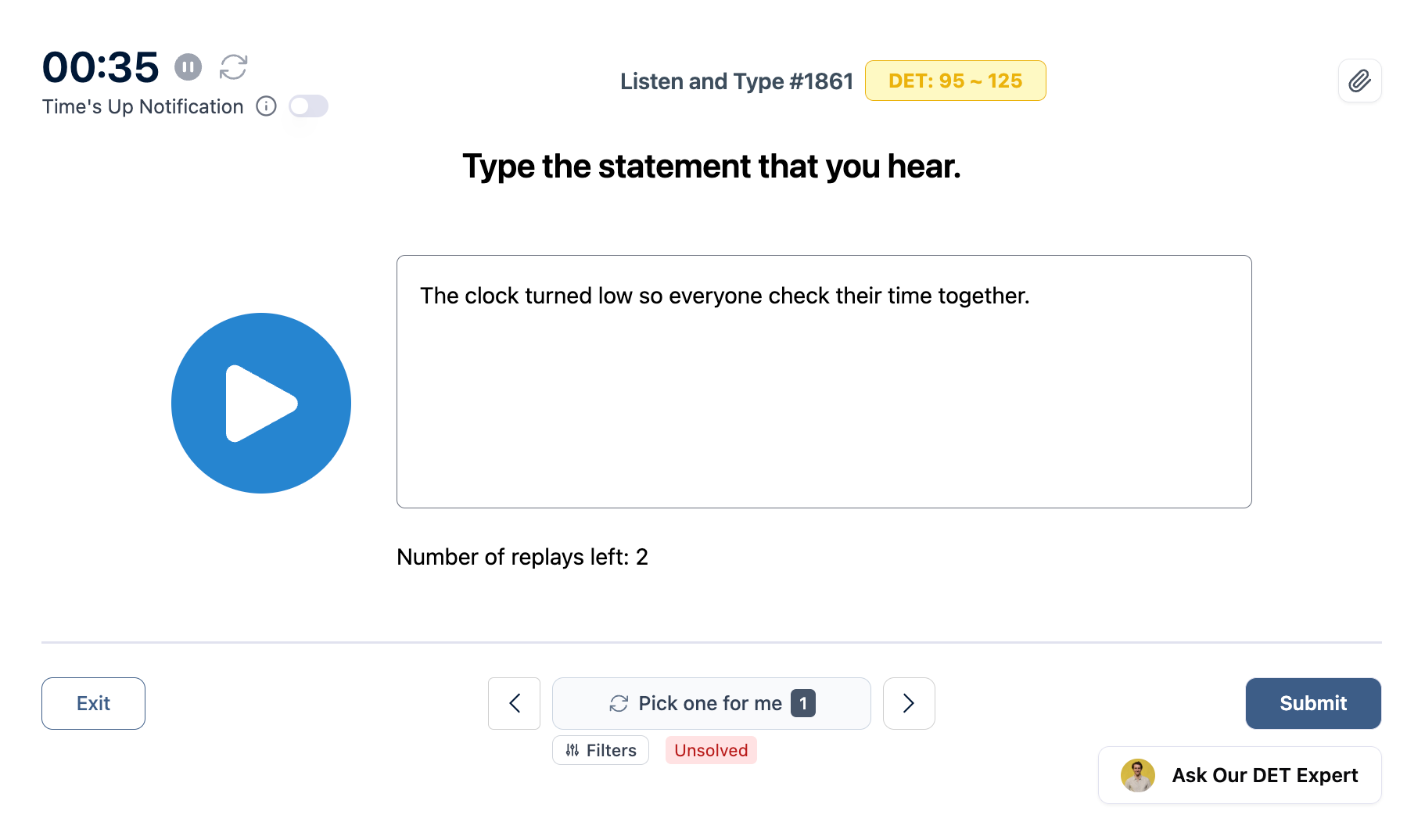
You can also see exactly which parts of the statement you got incorrect.
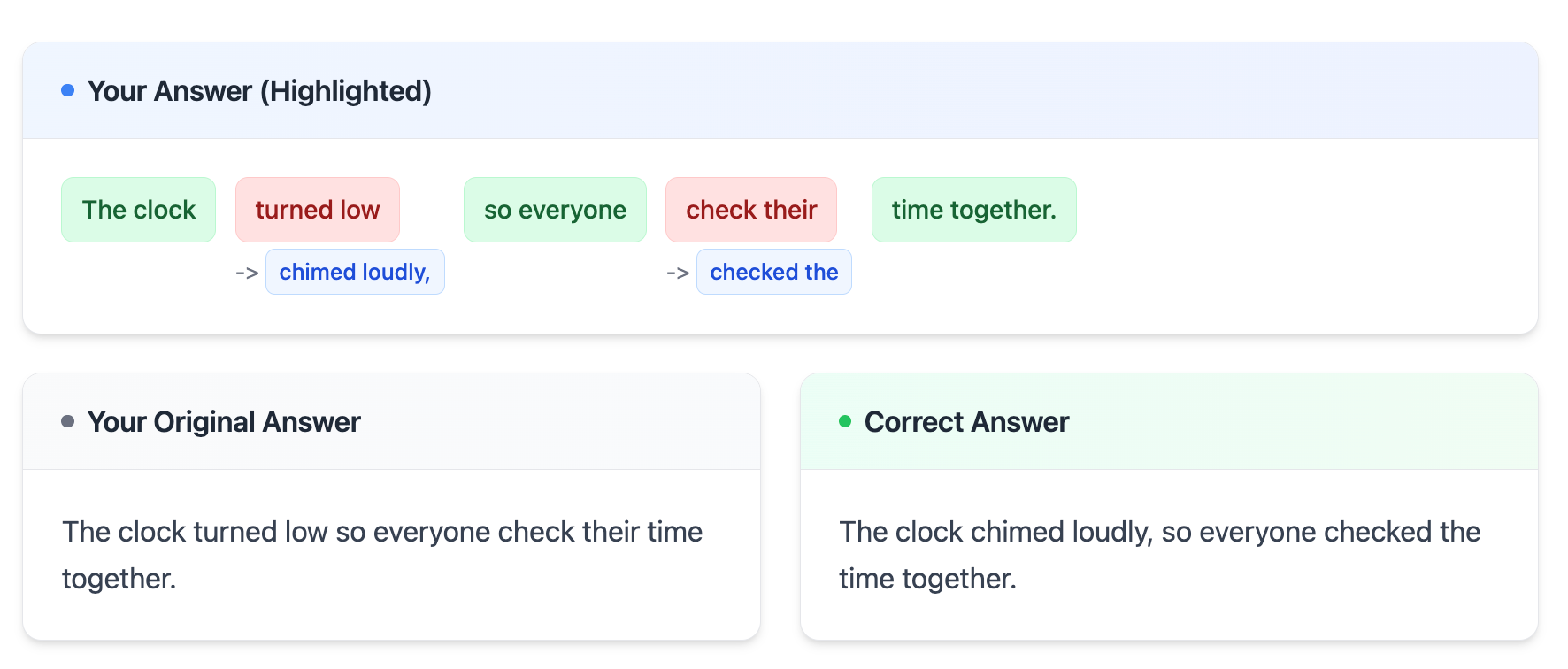
To get your free Arno account, just click below!

In order to do well on Listen and Type questions, you need to have a strong vocabulary so that you can understand what is being said. With Arno's free Vocabulary Builder, you can study the most useful words for comprehension (as well as other areas of the test like picture description). Just click here to start expanding your vocabulary and raising your score!
We also built a free Vocabulary Assessment so that you can determine the words you already know, allowing you to focus on learning the words that you don't know. Click here to take the assessment. (It will take 10-15 minutes).
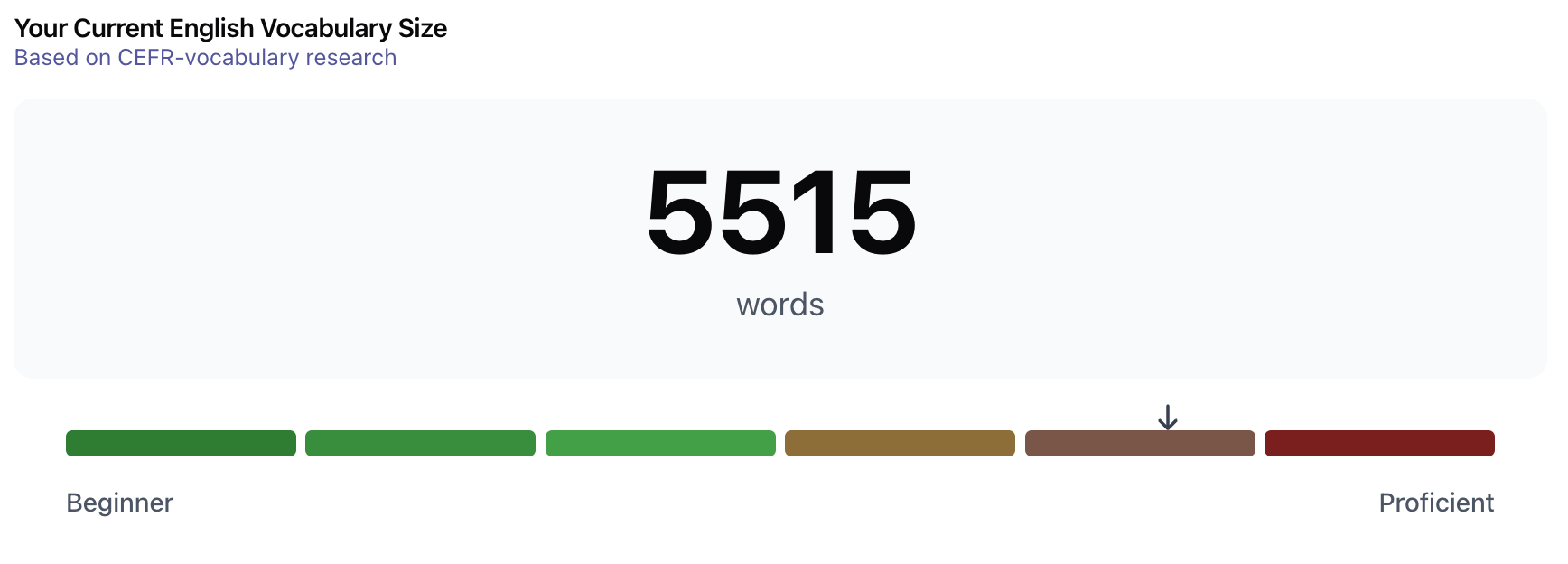
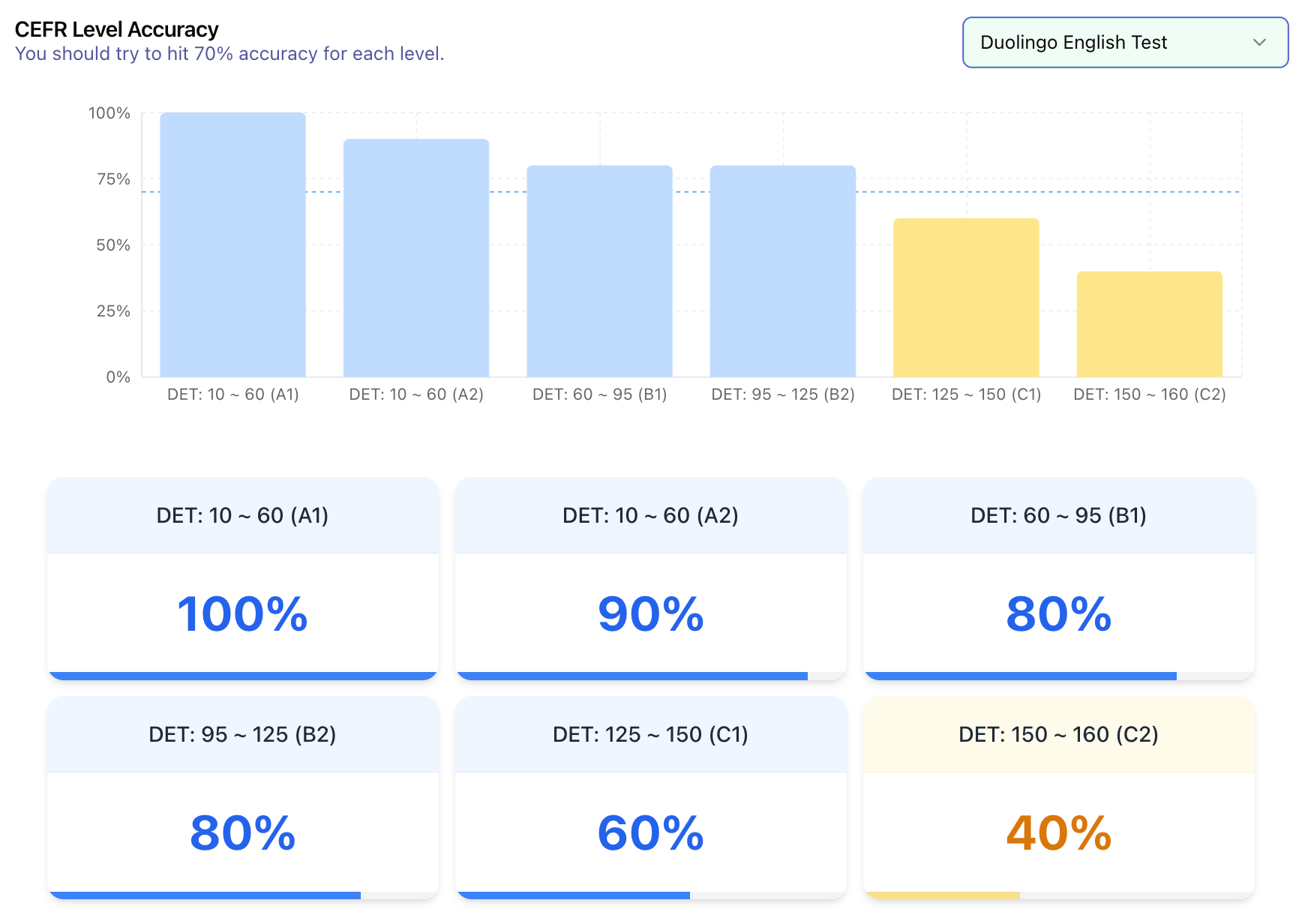
Conclusion
Now that you understand the Listen and Type question type, all you have to do is practice!
With Arno you can get unlimited practice questions for Listen and Type questions and all question types! It’s the best way to prepare for the Duolingo English Test and get the score that you need. To get started, just click here.